With the Second World War at a crescendo in Europe and the Pacific, in the middle of Canada, many thousands of kilometres away from both, a young Saskatchewan boy accidentally discovered one of the stranger weapons of the war.
On this day, January 12, 1945, while in a truck with his father and uncle, 15-year-old Ralph Melle spotted a strange object in the sky near the rural area of Minton near the U.S border with Montana. As it came down ahead of them, they stopped and went over to look at it, even tapping it with their feet. Fortunately for them, nothing happened, although it could easily have been deadly.
It turned out to be an incendiary/explosive bomb from one of Japan’s balloon bombs, a Fu-Go, fire balloon.
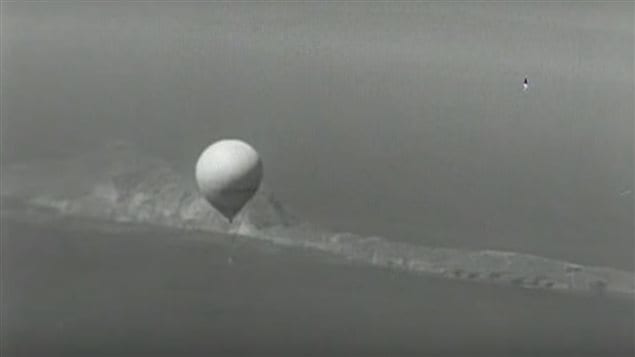
Other than an apparent and somewhat dubious submarine shelling of the B.C coast in 1942 the Japanese had no real way of attacking N. America. They did however come up with a scheme to sow panic and divert wartime resources in North America by causing forest fires and other damage potentially to infrastructure and cities. This was a revival of an idea first explored in 1933 of balloon bombs and the first thought was to launch from submarines off the N. American coast, but that was cancelled when all subs were recalled for the 1943 attack on Guadalcanal.
With calculations from meteorologists, there would be about 50 suitable days for balloon launches from Japan itself starting in November 1944 and into early 1945. The Japanese had created a special Balloon Regiment and they released some 9,000 balloon bombs into the upper atmosphere and carrying explosives and incendiaries.
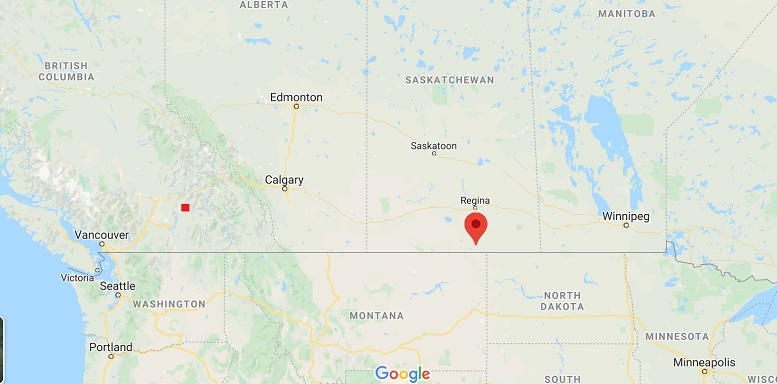
Arrow indicates Minton Sk, the red spot in B.C shows Lumby, where the most recent Fu-Go remains were found in 2014 (Google)
The balloons floating up into the jet stream would be carried westward across the Pacific on the several thousand kilometre voyage to North America. It would take about 3-4 days during the winter months for the balloons to travel across the ocean in the fast moving jet stream. That was the theory, but the reality was that only about one in ten reached the continent.
Those that did make it were later found from Alaska, to Texas. The largest number ended up in Oregon, while many of the others landed in British Columbia, with a few making it further west to Alberta, Saskatchewan and even Manitoba. The first such bomb was actually discovered on Jan 1,1945 near Stony House in northern Saskatchewan.
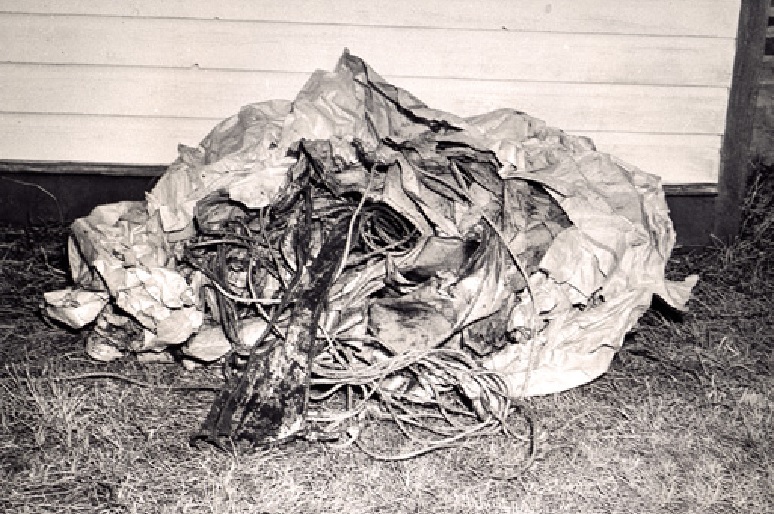
Remains of a Fu-Go recovered near Delburne Alberta. The balloons usually carried four 4.5kg incendiaries and one 15kg explosive (Library and Archives Canada PA-203216)
The large balloons were about 10 metres tall, and made of rubberized silk or paper. As they floated in the jet stream they would slowly lose hydrogen so there were altimeters and a battery operated mechanism to release the sandbag weights in order to keep the balloon bomb aloft. A weakness in the antifreeze around the batteries meant the batteries would freeze in the cold upper atmosphere and the sandbags would not be released which was one of the reasons many likely came down in the ocean and why so few reached their target.
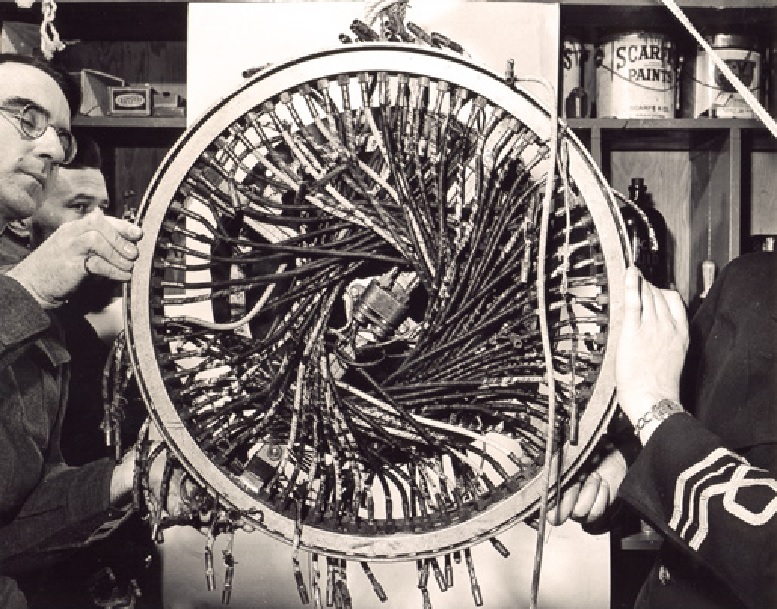
Officials examine the complex remnants of a Fu-Go found near Ft Simpson in the Northwest Territories
Of apparently 300 that reached North America, about 80 landed in Canada, causing very little damage and no injuries.
Once they were understood by the military and officials, if one was spotted the air force would send up fighters to shoot them down. About 19 in Canada were thus destroyed although it was difficult to even find them in the vast distances once reported.
Although the Fu-go were ineffective, both Canadian and American authorities were concerned that if the public knew Japan could bomb them and that there was virtually nothing the military could do to protect them, the news was kept secret.
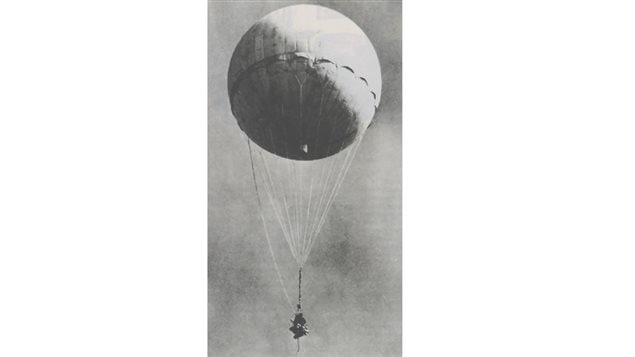
Whenever one was found, people were usually deliberately misled as to what it was, and in all cases told to keep quiet. Journalists were also told not report on findings, as the authorities did not want the Japanese to learn that some of their bombs were indeed getting to North America.
It was in Oregon where the only deaths were recorded when one of balloon bombs exploded killing a party of 5 young children and their Sunday school teacher when they went to inspect a strange object which they found near their picnic.
With no news of the bombs, by April 1945 the Japanese gave up on the idea as it seemed a failure, and by the fact that American bombing had destroyed the hydrogen plants and other facilities needed to make the Fu-Go.
Post war, balloon remnants were found in 1955 in Alaska, and two others in Oregon in 1978 and 1992
One of the bombs was discovered as recently as October 2014 near Lumby in the southern interior of British Columbia where a military demolition team blew it up after saying it was too dangerous to move.
Additional information – sources
- Wired- Oregon deaths 1945
- Canadian Press (via Globe and Mail) Oct 2014
- Youtube documentary
- Radio Lab- (several photos)
YOUTUBE
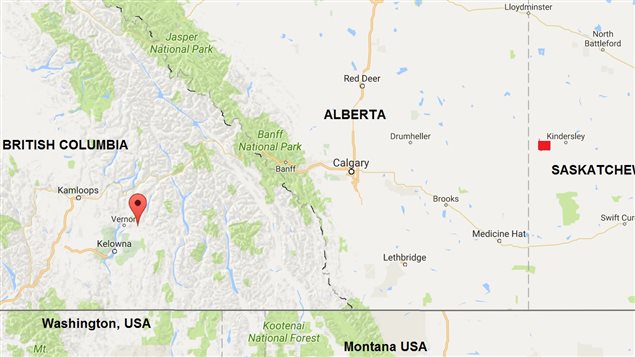
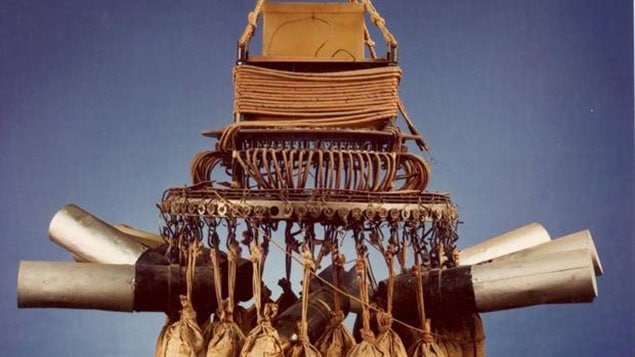






For reasons beyond our control, and for an undetermined period of time, our comment section is now closed. However, our social networks remain open to your contributions.